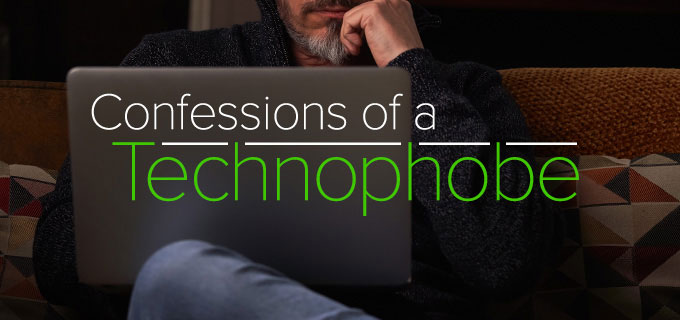
Part 73
Once again, I must emphasize that I’m not a great student of politics and my comments are purely based on my own observations of what was happening to the country I had always loved since I first arrived there at the age of ten.
When South Africa finally achieved a democratic government in 1994, South Africans of all races, with some exceptions, heaved a huge sigh of relief. Apartheid was dead and buried. President Nelson Mandela offered a real spark of hope for the future. He had accepted an awkward but realistic form of new government to take the country through the transition from the previous all-white Nationalist Party to an eventual fully democratic system.
It was a tricameral form of administration with the African Nationalist Congress (ANC), in one bloc, white representatives in a second bloc and people of other races (Indian, colored and Asian) in a third bloc. Each bloc was to represent the interests of their communities while joining together to build a workable future government.
Mandela made it clear that although he had opposed and fought against Apartheid since its inception, he was prepared to look forward rather than backward for the sake of creating a powerful new nation. This was to be based on the solid First World infrastructure already created, despite all its unfairness and shortcomings, during the Apartheid years.
The early days were fraught with difficulties as each element fought to gain as many advantages as they could but, in my opinion, it was an honest attempt to restructure the country with opportunities for all of its people going forward. Sadly, Mandela was already an old man whose dynamic presence from his early years was waning. He was, in fact, more of a statesman than a politician, more of an idealist, than a man used to the vicious cuts and thrusts of daily politics.
The hierarchy of the ANC immediately below him were far more radical in their thinking and, by the end of Mandela’s first term in office, they persuaded him to step down. Under the subsequent leadership of Thabo Mbeki and Jacob Zuma they implemented extreme left-wing politics in what turned out to be a form of reverse Apartheid against the whites. This effectively destroyed the country’s previous powerful infrastructure and South Africa rapidly deteriorated into yet another third world country.
I’d like to backtrack a little here and tell the story of my only direct encounter with a bantustan. What is a bantustan you say?
Well, as part of Dr. Verwoerd’s “grand strategy” of separation he created a number of self-governing regions within South Africa. The white nationalist government did everything in its power to persuade the black population to go to and live in these areas called bantustans, where in theory they would create their own industries and in time become self-supporting. It was a massive failure in that the black working class continued to be needed in the major industrial and mining areas of “White South Africa” centered around Johannesburg, Welkom, Cape Town and Durban. Despite poor wages, they still enjoyed a better standard of living than generally offered in the bantustans.
The word bantu, by the way, is a Nguni word for “the people” who migrated south from Western and Central Africa over the centuries. The word fell into disfavor amongst the blacks as the Apartheid rulers used the word dismissively and crowned it all by creating the word bantustan to denote the areas to which they were supposed to go and live, leaving the whites the majority of the land mass of the country to develop their Apartheid “heaven.”
Anyway, out of the blue, I was offered the opportunity to make a film of a hotel in the smallest of the bantustans, QwaQwa. This is a gloriously beautiful mountainous region adjoining the independent state of Lesotho and surrounded by the then Orange Free State province.

The Witsieshoek Mountain Lodge is perched on the top of some lower mountains overshadowed by the magnificent Drakensberg mountain range which runs about 1,200 miles along the eastern side of South Africa, with some of the mountains falling inside Lesotho, the home of the Sotho nation.
Overlooking Witsieshoek lodge is the Sentinel, one of the highest peaks in the Drakensberg at 10,387 feet. The Sentinel also boasts of the second-highest waterfall in the world with a stunning series of drops of 3,110 feet. The highest waterfall in the world is the Angel Falls in Venezuela at 3,212 feet.
This was also the first occasion that my eldest son Jason was available to work with me on this film as my cameraman. He had left the national South African Broadcasting Corporation to become a freelance cameraman mostly with the major cable channel, M-Net. I was lucky to get him for this shoot. He was proving to be a skilled cameraman, and this was his first full documentary.
Suddenly I was approached by the bantustan government to expand the film to incorporate the entire region. This was a magical moment. We not only had the hotel to shoot but also a traditional African village, an activity center with climbing walls and obstacle courses, beautiful lakes stocked with trout as well as traditional arts and crafts and a brief look at the industrial and academic developments in the capital of the region, Phuthaditjhaba, a predominantly African city of 180,000 inhabitants.
Thanks to the energy and leadership of the Chief Minister Kenneth Mopeli, who was elected after the creation of the bantustan in 1974, he constantly fought the Apartheid government and even managed to squeeze out some additional land for his territory. He also motivated the creation of a university for black students called Uniqwa, a stadium for their team in the top tier of the professional soccer league, and a fine hospital. We came away with the impression that, despite the limitations of finance and the maddening restrictions of Apartheid, the predominantly Sotho-speaking people of QwaQwa as well as some well-intentioned whites of this little territory had developed a dynamic energy against the setting of the majestic Drakensberg Mountain range.
Jason did a marvellous job. It was a stunningly beautiful place, a cameraman’s dream. We filmed the traditional village, bringing some tourists with us. We started with the village greeter hailing us outside the village perimeter. The men in our party were invited to drink traditional beer with the elders, which came in a calabash gourd and handed from man to man. Not exactly hygienic but we all entered the spirit of their traditions. Meanwhile, the women were taken to the conical-shaped huts, shown women’s artifacts as well as trying their hands at grinding maize in a large, traditional pestle and mortar.
Another highlight was a helicopter flight to film the territory from the air, as well as a quick peek at herds of wildlife in the nearby Golden Gate reserve. Then we rose dramatically higher and higher, flying in and out of wisps of cloud to film the Sentinel towering over the tiny territory. My heart was in my mouth as I watched my son leaning out of the chopper to capture the best shots of the peak. On a cold but cloudless early morning, Jason had stood in the biting mountain air to film wonderful close-ups of a Lammergeyer, an eagle-like vulture unique to the Drakensberg region as it hovered in the wind above the hotel’s Vulture Restaurant, diving down to pick up scraps of meat set out for it. Seeing these rare creatures was an exhilarating experience, even though Jason nearly suffered from hypothermia for his efforts.
We then took our “tourists” to the climbing walls and obstacle courses and had them compete over varying degrees of strenuous activity. That plus some trout fishermen fishing the lakes, traditional arts and crafts, the hospital, the university and a couple of small but profitable factories rounded off the story which was centered around the wonderfully rustic, but comfortable Witsieshoek Mountain Lodge.
There was an ironic outcome to this otherwise successful film. Shortly after the creation of the new democratic government on November 1st, 1994, we were called back by the new, entirely black administration of QwaQwa, now incorporated into the province, renamed Free State (having dropped the word Orange, because of its original Dutch connotation). Bantustans were now a thing of the past and the new regional council wanted us to reshape the film as a purely tourist attraction, with all references to the bantustan removed. We even had to replace our “tourists” at the obstacle course center with black participants. All of Jason’s fine scenic footage was retained.
Jason was not available for the re-shoot, but he found me a good replacement: my youngest son Greg was in between jobs and came as my assistant; so it was quite a family enterprise. The revised version was probably better than the original.
If the existing creation becomes obsolete, replacing it with a more accurately representative product which will always be valid for the future was a satisfying experience. Rather like ExoTechnology when it replaces existing computing systems with the ExoBrain which will be even more satisfying and will have its effect on a global scale with a much greater impact than a documentary of a small but beautiful corner of a mountain territory in South Africa.

